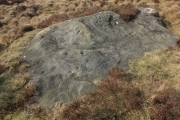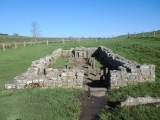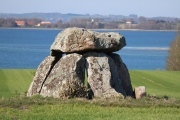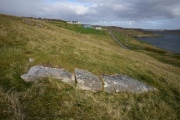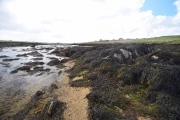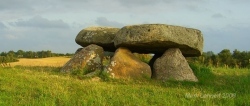Andy Burnham's Blog, page 229
June 25, 2019
Rivock 28
Rock Art in West Yorkshire. This carved panel is recorded as having forty three cups, some grouped together with grooves surrounding them. It is on Open Access land.
Published on June 25, 2019 10:35
Temple of Mithras (Carrawburgh)
Located to the south west of Brocolitia / Procolitia Roman Fort at Carrawburgh, Northumberland, just off the B6318 Old Military Road, this temple was excavated in the 1950s, where three known phases of construction were found. The temple has been partly reconstructed in its 4th century form. On private land, but open to the public. Entrance to the temple and fort (see our nearby sites) is free.
Published on June 25, 2019 10:33
Gors Fawr Stone Circle
This year's Summer Solstice sunrise at Gors Fawr. With thanks to Horatio for the photo. The only real stone circle left in the region, Gors Fawr stands on a moor close to the village of Mynachlog-ddu in the shadow of the Preseli Mountains. The circle of 16 blue stones form an egg-shaped ring and antiquarian reports indicate that there was once an avenue leading to the two outliers, which are found to the north-north-east.
Published on June 25, 2019 09:51
June 19, 2019
North Herts Museum
Friday June 21st - Lunchtime talk with curator and archaeologist Keith Fitzpatrick-Matthews - Fairgrounds for the dead: the prehistory of the Ashwell area. Also, North Herts museum finally opens fully on the 6th July. Details of both in the comments on our page. The ground floor of the new museum is now partly open, accessed via Hitchin Town Hall main entrance, Tuesday to Saturday 10.30am to 4.30pm. Visitors can currently see the Discovering North Herts. gallery, and the temporary exhibition gallery.
Published on June 19, 2019 12:19
Torup Dysse
The Impressive remains of a hexagonal dolmen near Knebel in Djursland, Denmark. Its covering barrow (probably it was a round barrow) is almost completely removed and the chamber fully exposed.
A part (approx one third) of the capstone has been lost due to blasting attempts, but the larger remaining part still rests on 4 orthostats.
A part (approx one third) of the capstone has been lost due to blasting attempts, but the larger remaining part still rests on 4 orthostats.
Published on June 19, 2019 08:02
June 18, 2019
Bryn Celli Ddu
Bryn Celli Ddu Open Day Sat 22nd June - come and say hello as the Megalithic Portal will be there too - see comments for details. Also Andy's Old Stones talk comes to Llangollen Museum on the evening of Sunday 23rd June . Passage Grave in Anglesey. The island's most famous passage tomb, which was built on top of a circle-henge. Its name means 'the mound in the dark grove'. It was plundered in 1699 and archaeologically excavated between 1928 and 1929. There is an ongoing archaeology project each summer investigating the surrounding landscape.
Published on June 18, 2019 07:09
June 16, 2019
Callanish 15
Hatsuki from Japan is the first to send us photos of Callanish 15 and 13 (see further down). On a slope behind a farm gate, above an upwards path beyond the gate there are several stones rolling. Most of them are boulders, one of them is an outcrop and one laying flat lane might have had stood there. This is scheduled as a fallen standing stone.
Published on June 16, 2019 02:58
Ballots Brunnen
A spring in the city forest of Iserlohn (North-Rhine-Westphalia, Germany). The water is supposed to be of good quality and famous for its putative healing power in the past. The spring itself is sealed by an iron plate, but is opened once a year on Pentecost. Hundreds of citizens come up here to celebrate and drink from the well for this occasion.
Local tradition has it that one lives one year more with each cup you drink from the well.
Local tradition has it that one lives one year more with each cup you drink from the well.
Published on June 16, 2019 02:52
Callanish 13
Reported by Ponting, Ponting and Curtis and listed as a stone setting, a small upheaval on the western bank of the bay of Tab Na Foadhail. The the site is covered with a lot of seaweed so come prepared with boots and knowledge of the tide!
Published on June 16, 2019 02:49
Sprove Jættestue
Jættestue (Passage Grave) in Præstø. Although it can get a bit overgrown and ploughing has left it rather on a pedestal, it is well worth a visit to see the long access passage.
Published on June 16, 2019 02:34

